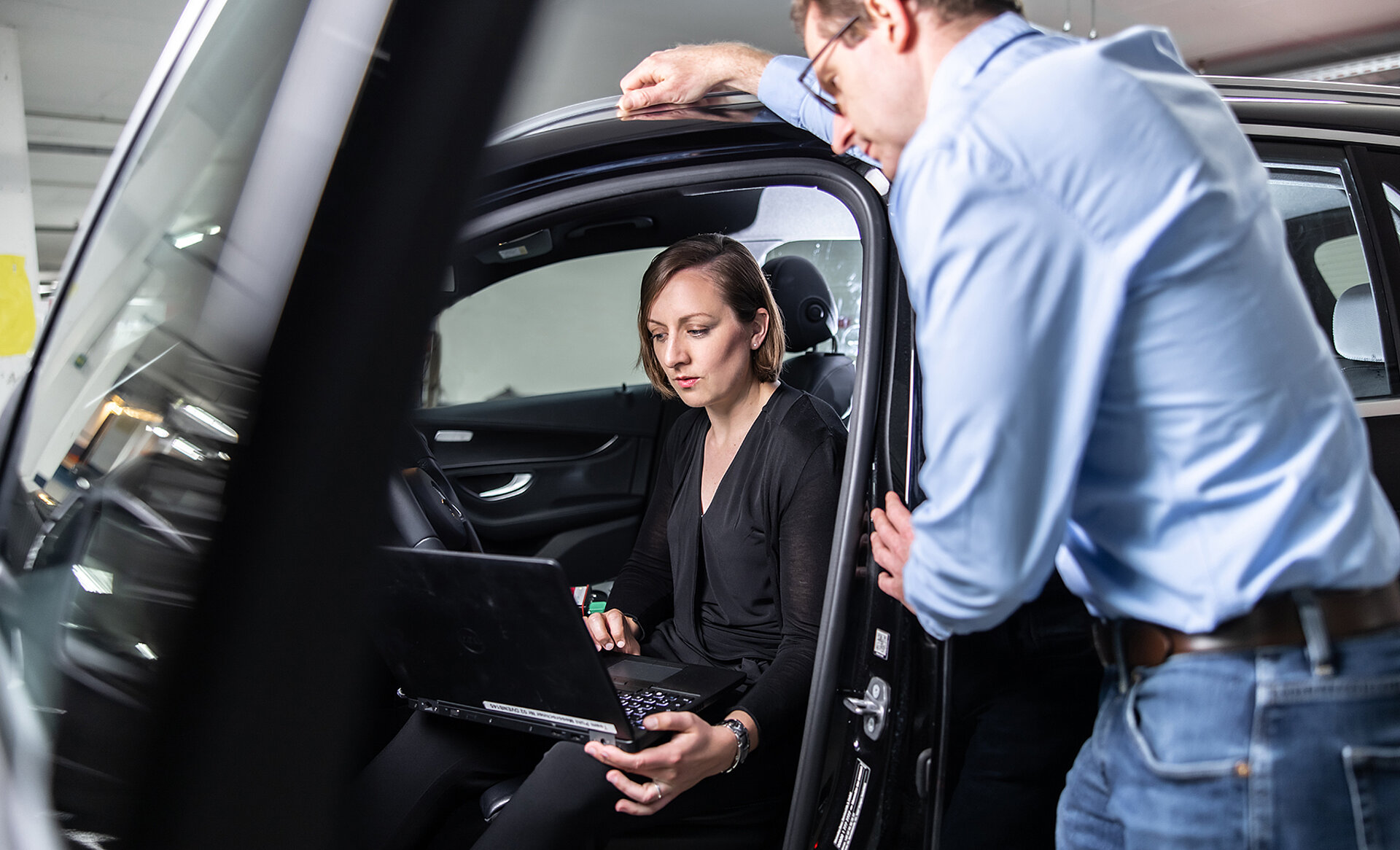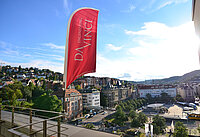
Continuity and trusting cooperation
Car driving is becoming increasingly comfortable. With every upgrade and every new model, new, complex components and functions are installed in the vehicle, whereas the old ones have undergone further development. New assistance and safety systems are being installed, whereby software and communication are playing an increasingly important part. However, the car must also be easy to operate for the driver. It is precisely within this environment of switches and controls that the Da Vinci team on the “Van Series Support” project has been accompanying an OEM since 2008. It is the “longest-serving” project of personnel and engineering service provider Da Vinci. The annual extension of the project by the car manufacturer is proof that the “Van team” has continuously fulfilled the requirements thereof with its expertise, and that a trusting collaboration has emerged.
“We started with testing activities,” explains team and project leader Dirk Pühl, who has been involved since 2009. “Over time, we have built up knowledge of the components, and now provide series support completely independently.” If something changes in the series, i.e. a component is no longer available or a model upgrade is pending in which the operating concept needs to be modified, the modifications are processed by the Da Vinci Van team independently.
The process is as follows: For example, if a switch is no longer to be located on the left, but in the middle so that the front passenger can also operate the relevant function, the customer sends a request to Da Vinci. “We evaluate the change, describe it and discuss it with the supplier, who makes an appropriate offer. This is presented to the OEM, and if the decision is made to implement the change, we oversee the entire implementation thereof.” Prototype parts are manufactured, which then tested by the Da Vinci engineers - in the laboratory and on the test bench. In vehicle tests at home and abroad, Da Vinci engineers test the installed component under taxing winter and summer conditions. At the end of the development process, recommendation for release is produced. The change is then implemented in series production.
The specifications for how a control element such as a window switch should look and feel (button symbols, contour, feel, etc.) come from the manufacturer, and Da Vinci checks the technical feasibility and delivers the complete solution.
New skills which the team can provide
The Da Vinci Van team currently consists of nine employees, including two women, and a student employee. They are classic designers, electrical engineers, computer scientists and mathematicians. Controls are now equipped with processors and software, and more and more touch displays are being used, which means a completely different approach in comparison to classic controls such as switches and buttons, and always requires new skills which Da Vinci can provide. For example, graphics need to be stored which open up new possibilities. “A switch is no longer a switch, but a functional component,” says Dirk Pühl.
Providing series production support for vans means adapting the controls from the manufacturer's passenger car range to the vans, so that they work in the van and are compliant with all of the regulations. Seat adjustment, for example: the seat position in a van is different than in a car, since it tends to be further forward and more upright. However, Da Vinci employees are also faced with completely different challenges which go far beyond technical issues. There are many special vehicles in the van area. “Where do I position the seat adjustment switch in a vehicle that is used by a gardener and landscaper who might clean the footwell of the driver's cab with a power washer?” asks Dirk Pühl. The switch is usually located at the bottom and shouldn’t get wet. “We learned as we went along,” says the project manager, referring to experience gained from working with the OEM over the years. Many other requirements come into play in the special vehicle area, such as country-specific regulations. All work steps that are carried out by Da Vinci are carefully documented in detail by the developers and transmitted to the OEM who is legally responsible for their vehicle.
However, the van team can also carry out its own concept work. For example, studies of reach areas have been carried out in accordance with specifications and DIN standards, which relates to where and how controls should be positioned so that they are accessible to everyone. The results were tried out virtually in the manufacturer's special facilities. “This also makes it interesting for career starters to work in such an environment,” says Dirk Pühl. A long-term project which has been in progress since 2012 is a luxury seat for vans, which was successful, contrary to expectations. Not only does it have heated seats and neck pillows, but also massage functions, and is under constant development by the Da Vinci people.
The diversity of the tasks and the trusting interaction between colleagues in the project and with the OEM creates stability. The first colleague to start working on the project in 2008 is still there, and another has returned after a short stint elsewhere. “There is dynamism in the controls area and it is also an emotional topic, which is what makes it so interesting,” says project manager Dirk Pühl. And the long-term nature with regard to the employees and the project duration is by no means a given for a service provider.



